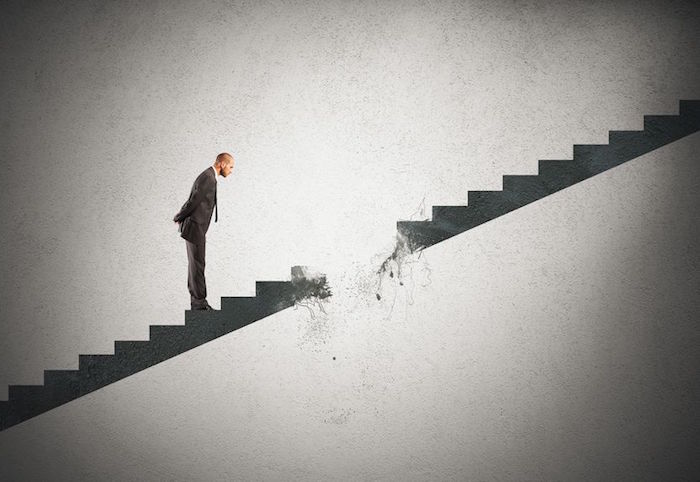Many may see 2020 as a year filled with uncertainties, dashed dreams, and harsh realities that both the older and younger generations will have to deal with in unchartered ways.
The rise of the Coronavirus has shaped the entire global business environment in 2020, with many still struggling to adjust. Many have described the collective effort to fight the coronavirus pandemic as the defining moment of the 21st century, or this current generation’s second world war. Though there may be some truths to the analogy it is quite a harsh presumption and frankly far-fetched. Whichever way you may choose to look at it, one thing remains true, the world of business is changed in unprecedented ways and speed.
Business environment in 2020 – Origin of a virus that shaped our world
The World Health Organization (WHO) released its plan to investigate the origins of the COVID-19 pandemic in the past month. The search is said to begin in Wuhan, China, the epicenter of the outbreak which was first detected the latter part of 2019.
Most researchers suggest the virus originated in bats, but how it was transferred to humans remains a mystery. The outbreak soon spread across the globe like a wildfire in the first few months of 2020. It was thus declared a global pandemic by the World Health Organization (WHO). The outbreak of the Severe Acute Respiratory Syndrome (SARS), another strain of the coronavirus in 2002–2004 was also believed to have been transferred to people from raccoon dogs (Nyctereutes procyonoides) or civets.
The virus, since its outbreak in the early months of 2020, is still spreading across the world, with over 76 million confirmed cases in 190 countries and close to 2 million deaths. The United States leads the world with record numbers of infections and death. The United States has recorded nearly 20 million cases and more than 300,000 deaths from the coronavirus outbreak. Brazil and India follow suit with over 180,000 deaths and over 145,000 deaths respectively.
The African region has recorded over 2 million cases with over 50,000 deaths. The low death rates on the continent have baffled many scientists across the world, however, some have speculated the relatively youthful population, experience in epidemic control in tackling other diseases like EBOLA, and cross-immunity from other coronaviruses as the possible reasons for the low death rates.
The changing business environment in 2020 – How the business world changed
In an effort to fight the pandemic, nations across the globe instituted lockdown protocols and restrictions of movement and trade. The move brought about both negative and positive impact across the world.
Struggle to stay afloat
However, most businesses faced losses in sales and revenues which forced most businesses to layoff workers or cutdown salaries. This led to businesses seeking stimulus packages to stay afloat. There has been high unemployment rates, and a general sense of worry and despair. In the United States, 30.2 million Americans were receiving unemployment checks in the week ending July 11, and in Ghana 42,000 employees were laid off during the country’s COVID-19 partial lockdown. In the United Kingdom (UK) between 7th to 20th September, 86% of businesses were operating, and out of that figure, 43% experienced a decrease in profits which is out of the normal given the time of year. In the Asia Pacific, 61% of small-medium businesses (SMB) reported a fall in sales due to the Covid-19 pandemic, and between January and May 2020, 46% of small-medium businesses (SMB) had to close down.
Surge in Digital Technology
Entrepreneurs and business leaders, to survive and thrive in the era of COVID-19, had to quickly adjust and embrace digital technology. Digital technology adoption in business operations has thus taken a quantum leap forward.
E-commerce for instance has witnessed a surge during this era. Behavioral patterns of customers also witnessed a change.
COVID-19 forced shops around the world to close down for months and reopen under strict social distancing protocols and guidelines. This according to the World Economic Forum has accelerated the shift away from physical stores by “roughly five years.” According to the World Economic Forum department, stores are expected to decline by over 60% with e-commerce expected to grow by nearly 20% in 2020. Customers also focused on buying essentials such as groceries and home improvement materials, as schools were closed and most people worked from home.
Work from Home
Working from home also looks set to be a part of a new normal in people’s lives for some time to come. Working from home is no longer restricted to business owners or entrepreneurs. Now, employees from all kinds of sectors have been forced to work from home due to the pandemic. Working from home will take a permanent stance especially for companies that have invested in their digital workforce during the pandemic. Reverting to the old normal will be a drawback to the progress. Digital tools such as Zoom and Microsoft teams have made working from home easier and just as productive as being present in the office. Large tech firms like Google and Facebook said they will operate at around 30% of office capacity while Twitter says some of its employees can continue to work from home permanently.
Business environment in 2020 – Sector performance
Businesses in tourism, aviation, restaurants, and hospitality faced major downturns in revenues. For instance, according to the World Travel and Tourism Council, globally, in 2019, the tourism industry contributed $8.9 trillion to the global GDP representing 10.3% of global GDP. 1 in 10 jobs around the world is in tourism, equaling 330 million jobs. In 2020 and with the severe impact of COVID-19, international tourism fell by 22% in the first quarter and by 65% in the first half of 2020.
In June, The International Air Transport Association (IATA) in its financial outlook report, indicated that on a global scale, airlines are expected to lose $84.3 billion in the year 2020 for a net profit margin of -20.1%. The report also stated that revenues will fall by 50% from $838 billion in 2019 to $419 billion. In 2021, IATA expects losses to be cut to $15.8 billion as revenues rise to $598 billion.
“Financially, 2020 will go down as the worst year in the history of aviation,” said Alexandre de Juniac, IATA’s Director General and CEO.
“On average, every day of this year will add $230 million to industry losses. In total, that’s a loss of $84.3 billion,” he further said.
Positive Growth for some businesses
Some businesses on the other hand have experienced positive growth during the COVID-19 pandemic. Gaming companies for instance have witnessed some growth as many people remained at home during the lockdown. Activision Blizzard, Electronic Arts, and Nintendo are some of the gaming companies to profit from COVID-19. Activision Blizzard said “Call of Duty: Modern Warfare,” which came out in September of last year, sold more copies than any other “Call of Duty” title. In the first quarter, it generated sales of $1.52 billion which were up 21% compared with last year’s $1.26 billion.
In May, Nintendo stated that its annual profit increased by 41%, and profits in the first three months of 2020 more than tripled compared with the previous quarter.
Other companies such as Zoom and Slack also received massive growth. According to the CEO of Zoom, Eric Yuan, The company hosts 300 million meeting participants a day. Its stock was also said to be up by 120% for the year.
Though COVID-19 has been a bust for many businesses, it has also been a source of growth for other businesses. COVID-19 has led many destitute and we certainly hope 2021 brings about a major economic recovery, though recovery may be slow.











